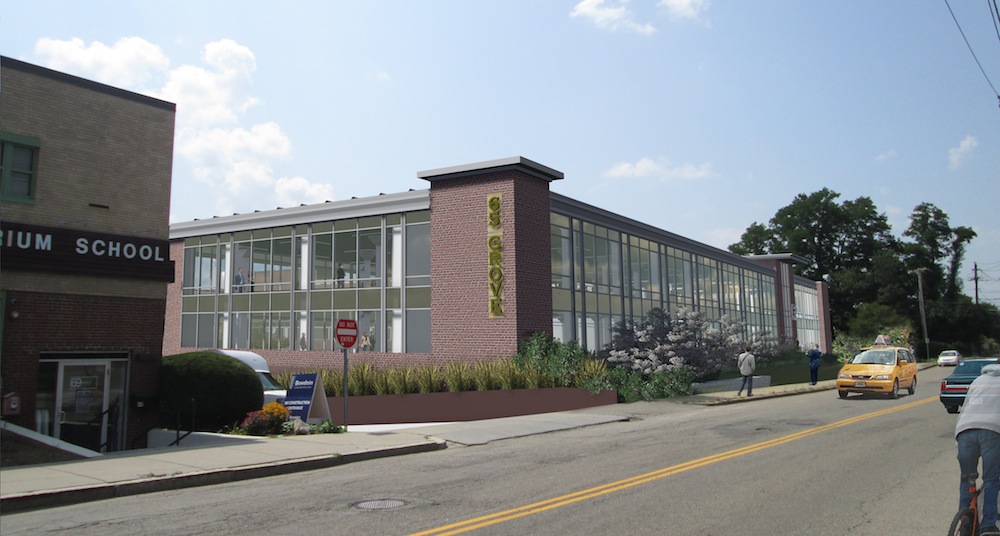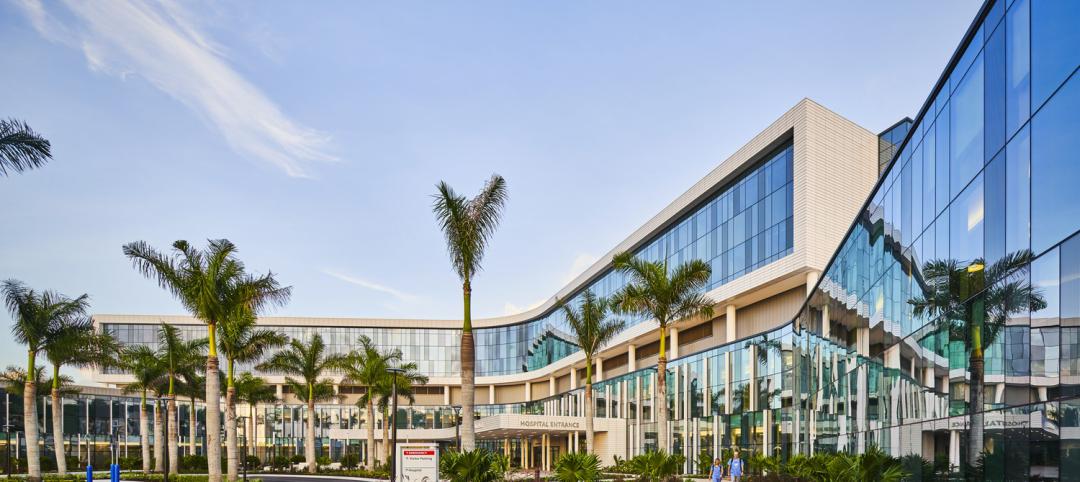The U.S. construction industry experienced a very strong year in 2015, up 10% over 2014, so what’s the outlook for 2016? Our projection at Tocci Building Companies: Commercial/institutional building construction will remain strong, finishing about 14% higher at the end of 2016 compared to 2015.
Many factors are contributing to this projected building growth, notably regulation, demographics, inexpensive capital, a strengthening U.S. economy, and technology. Alternative delivery methods are helping to make projects viable where they otherwise would not be.
Labor shortages may Impede growth to some extent will be. According to the Bureau of Labor Statistics, employment rose in 43 states in October, while declining in seven states. Finding qualified workers to perform the work has become onerous. Immigrant labor from Central America has helped somewhat, but the need for more skilled craftsman—electricians, pipefitters, plumbers etc.—will not be filled through immigration. Labor shortages will begin to slow growth and create wage inflation.
COMMERCIAL CONSTRUCTION FORECAST
Retail Stores and Malls
 Crate & Barrel in Natick, Mass. SF - 33,000. Client - Crate & Barrel. Architect - Teng and Associates, Inc.
Crate & Barrel in Natick, Mass. SF - 33,000. Client - Crate & Barrel. Architect - Teng and Associates, Inc.
Online sales continue to grow, and extreme discounters keep expanding. Major retail chains and deep-discount stores will lead construction growth in this sector, although there will be some significant activity among regional and national grocery, drugstore, and quick-service restaurants. Specialty stores in urban cores will also contribute to growth, as will e-commerce warehouses. Look for increased activity in store renovations as well. There is the potential for 9% construction growth in this sector in 2016. Retailers will continue to fret about a possible increase in the federal minimum wage and the strength in the overall U.S. economy, which could slow growth.
Commercial Warehouses
 W.B. Mason Warehouse in South Boston, Mass. SF - 360,000. Client - Cresset Development. Architect - Miller Dyer Spears.
W.B. Mason Warehouse in South Boston, Mass. SF - 360,000. Client - Cresset Development. Architect - Miller Dyer Spears.
Commercial warehouse construction is being buoyed by regional distribution centers for major retailers and the positive effect of the Panama Canal expansion. The strong dollar and a weakened global are pushing up imports of cheaper goods into the U.S., driving up warehouse construction. We are looking at an 8-10% growth in this sector in 2016. A slowdown in the U.S. economy could be a drag on this sector, but not by much.
Office Buildings
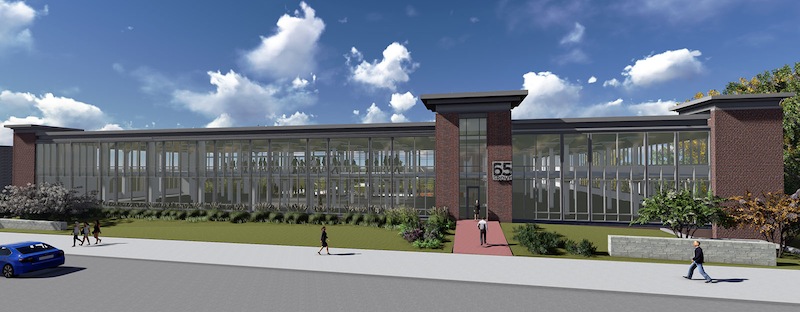 65 Grove Street in Watertown, Mass. SF - 120,000. Client - Cresset Development. Architect - Miller Dyer Spears.
65 Grove Street in Watertown, Mass. SF - 120,000. Client - Cresset Development. Architect - Miller Dyer Spears.
Office construction, one of the last sectors to recover from the recession, is poised to continue its recent growth. Nontraditional buildings such as data centers are leading the charge. Technology and life science companies are also adding to office building growth. Rising employment has finally helped absorb existing space. New traditional office space is also needed—notably in primary markets and, to a lesser extent, secondary markets. In many urban centers, rents are at, or nearing, unprecedented levels. Even though ARRA funding has dried up, government office construction is still adding to growth in this sector. As the office market continues to heat up, so has speculative development. We are looking for a 14% growth in the office market sector.
Hotels
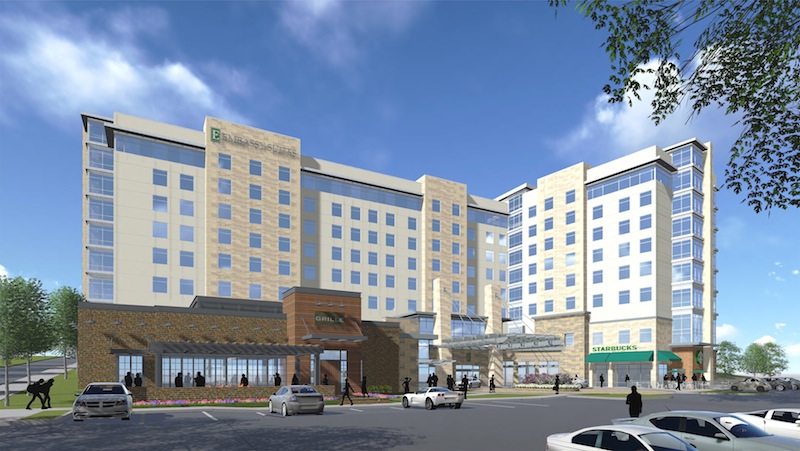 Embassy Suites Berkeley Heights in Berkeley Heights, N.J. SF - 187,000. Client - Connell Real Estate and Development Company. Architect - Raintree Architecture, Inc.
Embassy Suites Berkeley Heights in Berkeley Heights, N.J. SF - 187,000. Client - Connell Real Estate and Development Company. Architect - Raintree Architecture, Inc.
The hotel industry experienced intense growth in 2015 with an increase of 21,000 units over 2014 for extended-stay rooms. This was more than double what was added over the prior year. Fueled in part by Millennials, who travel an average 4.7 times/year for business and 4.2 times/year for leisure, hotel occupancy rates are currently trending at a 15-year high—65%. Improving economic conditions will lead to greater travel across the population, and growth in casinos, convention centers, and mixed-use complexes will further propel this sector.
Millennial travel patterns are also generating a wave of remodeling to make rooms and lobbies trendier and more conducive to the Millennial lifestyle. Forty percent of 3,000 hotel owners and operators recently surveyed are planning major renovations in 2016; 28% of these operators (about 840) indicated that they planned to start work within six months. After such a strong year, our forecast for hotels calls for a more modest, yet respectable, 7% bump.
INSTITUTIONAL CONSTRUCTION FORECAST
Education Facilities
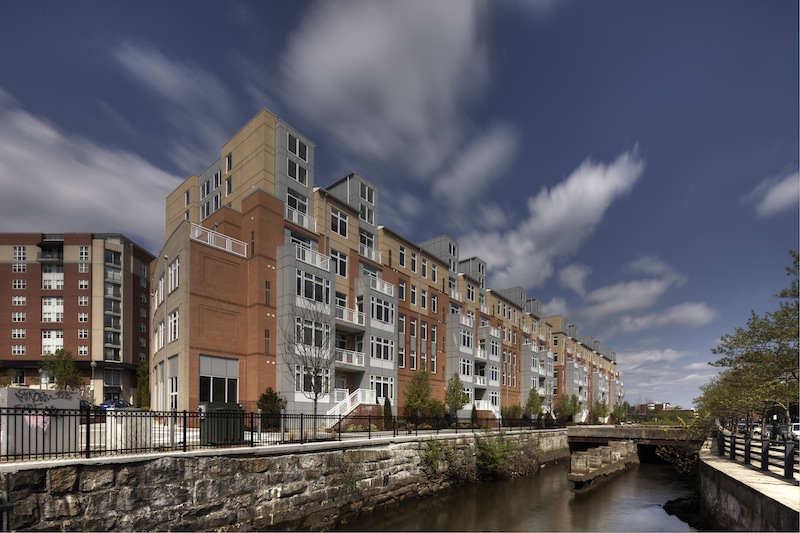 The Cove for Johnson and Wales University in Providence, R.I. SF - 157,500. Client - Johnson and Wales University. Architect - HDS Architects and Elkus Manfredi Architects.
The Cove for Johnson and Wales University in Providence, R.I. SF - 157,500. Client - Johnson and Wales University. Architect - HDS Architects and Elkus Manfredi Architects.
Construction at schools and institutions of higher learning is poised to rise about 13%, to $55 billion, in 2016. K-12 school construction will continue to dominate this segment, as many states and local school districts continue to put major school bond issues on the ballot. More than 45% of K-12 schools also need significant rehabilitation work, to the tune of about $4.5 million per school building. Not all of this construction will take place in 2016, but it bodes well for construction growth in this sector for the foreseeable future.
Among four-year colleges and universities, there is a war for student talent like never before. College enrollments surged during the recession and have begun to slow down during the recovery now that more jobs are available. Missing enrollment targets by only 10-20 students can mean a $500k - $1M budgetary shortfall. One battlefront in this war is upgrading campuses to attract this talent. Close to half the construction growth on college campuses has been in science, technology, engineering, and math facilities. Three of the largest five college projects last year were STEM-related.
Another area of competitiveness has been residence halls. In 2015, student living starts reached $6.9 billion, up from prerecession levels of $5.8 billion. We are projecting residence facilities to grow at about a 7% rate. Spending on amenities is seen as a differentiator for many institutions that fall short of the top tier.
Competition from online schools and the newer concept of un-college (or self-directed learning) will continue to impact non-top-tier colleges and universities.
Healthcare Facilities
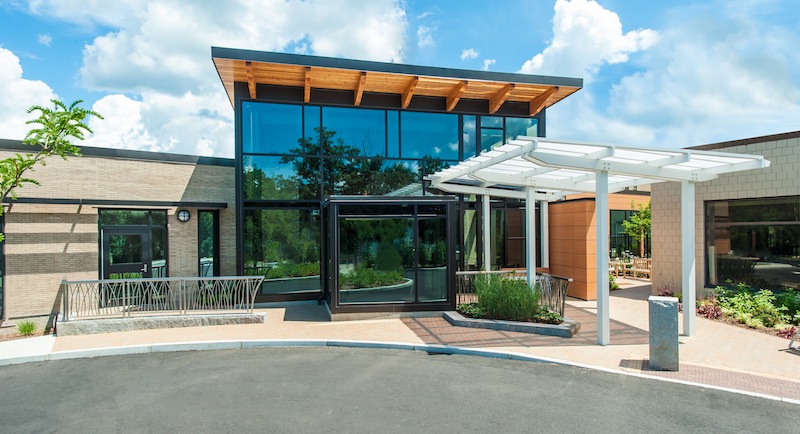 UMass Marlborough Hospital Cancer Pavilion in Marlborough, Mass. SF - 14,500. Client - UMass Memorial Healthcare. Architect - The S/L/A/M Collaborative.
UMass Marlborough Hospital Cancer Pavilion in Marlborough, Mass. SF - 14,500. Client - UMass Memorial Healthcare. Architect - The S/L/A/M Collaborative.
Now that the Affordable Care Act has made health insurance available to all Americans, the customer base has ballooned by 16.4 million as of March 2015. To meet this upsurge in demand, healthcare providers see a need for creating large-scale campuses, more operating rooms, outpatient and ambulatory facilities, and suburban medical office buildings—all while keeping costs under control. Demographics are also playing a major role. Of the estimated 75 million Baby Boomers, 45 million are over the age of 65. Those over the age of 65 will increase by about three million a year through the next 20 years.
To accommodate the expected patient growth and improve efficiency, many healthcare operators are renovating or expanding existing facilities; most are doing both. To keep costs down, healthcare systems are leading the charge toward alternative delivery systems and leveraging technologies such as BIM. Large healthcare projects are being constructed in a more collaborative fashion, utilizing integrated project delivery, design-build, and our own Tocci brand of IPD, which we call Highly Collaborative Project Delivery, or HCPD. These processes have resulted in better-designed facilities that are being completed faster and more efficiently than can be done under traditional delivery methods. We look for healthcare to improve by 9% in 2016.
The cost savings using IPD or HCPD in healthcare allows for bigger and more complex projects. This trend is not going unnoticed in other segments of construction, namely technically sophisticated projects like life sciences and mega-projects like casinos.
Multifamily Housing
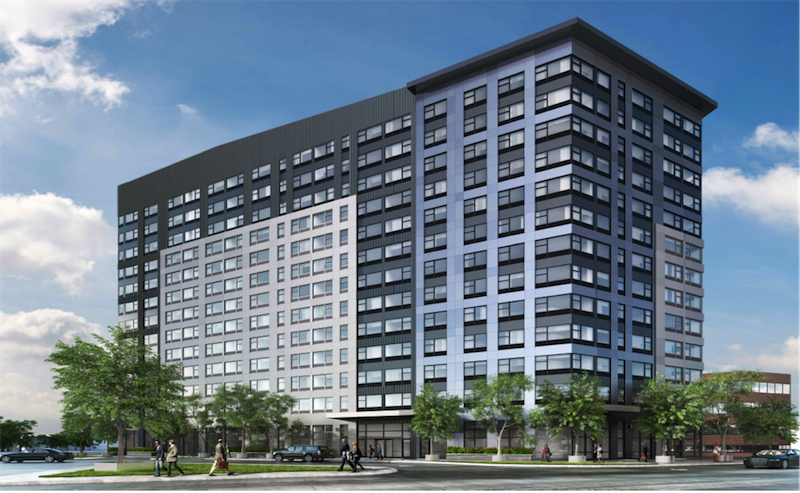 3 Journal Square Plaza in Jersey City, N.J. SF - 219,500. Client - Hartz Mountain Industries, Inc. Architect - Marchetto Higgins Stieve Architects.
3 Journal Square Plaza in Jersey City, N.J. SF - 219,500. Client - Hartz Mountain Industries, Inc. Architect - Marchetto Higgins Stieve Architects.
Multifamily housing remains the star performer in this recovery. The 20-34 age demographic (children of Baby Boomers) is growing. This age group is the typical renter. The untypical renter is the growing 55-64 demographic of empty nesters. These two age groups are pushing up demand for rental housing. They are demanding walkability and high-end amenities in a work-live-play environment.
A significant amount of capital is chasing the apartment sector, a trend that does not seem to be abating anytime soon. Deals can be financed at 3%, making them easy to justify, especially in light of the available fixed-income alternatives, which can’t come close to real estate.
Expect growth to remain torrid at 17-20% in 2016. Rental demand is on the rise and shows no signs of slowing down. Most markets cannot keep up with current demand, making this segment a star performer for 2016 and most likely beyond.
Conclusion
Demographics and the strengthening U.S. economy are helping to drive construction growth. As the economy strengthens, employment is increasing. After sitting on the sidelines for the past few years, businesses and developers are building new office space.
Millennials (age 18-34), who now outnumber Baby Boomers, are traveling more than other demographic groups, which is feeding hotel growth and remodeling. The strengthening economy is increasing discretionary income, helping the lodging and retail sectors. Millennials are impatient shoppers, making it imperative for retailers to invest in more robust order fulfillment systems and fast and excellent customer service. Retailers who ignore Baby Boomers do so at their own risk. Boomers have significant financial resources and are much more active and educated buyers than previous older generations.
Millennials are also of the age to move out of their parents’ homes. They’re looking for apartments in the urban core, but there is also a significant amount of mixed-use development occurring in the suburbs, particularly in transit-oriented developments. This is an indication that developers believe that Millennials choosing to defer marriage and families will embrace the suburban lifestyle—albeit in the context of mixed-use properties rather than what their parents opted for.
Baby Boomers and the Affordable Care Act are infusing life into what just a few years ago was a moribund healthcare construction sector. Emphasis will be placed on preventive care and wellness initiatives for younger Boomers, as well as more traditional acute care for the older demographic.
Inexpensive capital is flowing into urban-core areas, especially those with a strong presence in healthcare, education, and the life sciences. In general, areas with historically high rents are faring much better than areas that rise and fall with the economy. Lower rent areas are also seeing some growth, but it is more tepid than in the urban cores.
These are heady times for builders, and there is cause for optimism. While it is true that certain larger issues, such as industry labor shortages or another financial crisis emanating from China, could slow down growth, the way things look today, this train has miles to go before running out of steam.
ABOUT THE AUTHOR
Bud LaRosa is Chief Business Performance Officer and CFO at Tocci Building Companies, Boston, Mass. He leads the implementation and execution of all performance metrics and strategic initiatives and is responsible for the firm’s financial reporting and risk management. A veteran of more than 20 years in the construction industry (seven of them at Tocci), he holds an MBA in finance from Bentley College’s Elkin B. McCallum Graduate School of Business.
Related Stories
Data Centers | Sep 21, 2023
North American data center construction rises 25% to record high in first half of 2023, driven by growth of artificial intelligence
CBRE’s latest North American Data Center Trends Report found there is 2,287.6 megawatts (MW) of data center supply currently under construction in primary markets, reaching a new all-time high with more than 70% already preleased.
Data Centers | Sep 15, 2023
Power constraints are restricting data center market growth
There is record global demand for new data centers, but availability of power is hampering market growth. That’s one of the key findings from a new CBRE report: Global Data Center Trends 2023.
Contractors | Sep 12, 2023
The average U.S. contractor has 9.2 months worth of construction work in the pipeline, as of August 2023
Associated Builders and Contractors' Construction Backlog Indicator declined to 9.2 months in August, down 0.1 month, according to an ABC member survey conducted from Aug. 21 to Sept. 6. The reading is 0.5 months above the August 2022 level.
Contractors | Sep 11, 2023
Construction industry skills shortage is contributing to project delays
Relatively few candidates looking for work in the construction industry have the necessary skills to do the job well, according to a survey of construction industry managers by the Associated General Contractors of America (AGC) and Autodesk.
Giants 400 | Sep 5, 2023
Top 80 Construction Management Firms for 2023
Alfa Tech, CBRE Group, Skyline Construction, Hill International, and JLL top the rankings of the nation's largest construction management (as agent) and program/project management firms for nonresidential buildings and multifamily housing work, as reported in Building Design+Construction's 2023 Giants 400 Report.
Giants 400 | Sep 5, 2023
Top 150 Contractors for 2023
Turner Construction, STO Building Group, DPR Construction, Whiting-Turner Contracting Co., and Clark Group head the ranking of the nation's largest general contractors, CM at risk firms, and design-builders for nonresidential buildings and multifamily buildings work, as reported in Building Design+Construction's 2023 Giants 400 Report.
Giants 400 | Aug 31, 2023
Top 35 Engineering Architecture Firms for 2023
Jacobs, AECOM, Alfa Tech, Burns & McDonnell, and Ramboll top the rankings of the nation's largest engineering architecture (EA) firms for nonresidential buildings and multifamily buildings work, as reported in Building Design+Construction's 2023 Giants 400 Report.
Giants 400 | Aug 22, 2023
Top 115 Architecture Engineering Firms for 2023
Stantec, HDR, Page, HOK, and Arcadis North America top the rankings of the nation's largest architecture engineering (AE) firms for nonresidential building and multifamily housing work, as reported in Building Design+Construction's 2023 Giants 400 Report.
Giants 400 | Aug 22, 2023
2023 Giants 400 Report: Ranking the nation's largest architecture, engineering, and construction firms
A record 552 AEC firms submitted data for BD+C's 2023 Giants 400 Report. The final report includes 137 rankings across 25 building sectors and specialty categories.
Giants 400 | Aug 22, 2023
Top 175 Architecture Firms for 2023
Gensler, HKS, Perkins&Will, Corgan, and Perkins Eastman top the rankings of the nation's largest architecture firms for nonresidential building and multifamily housing work, as reported in Building Design+Construction's 2023 Giants 400 Report.


